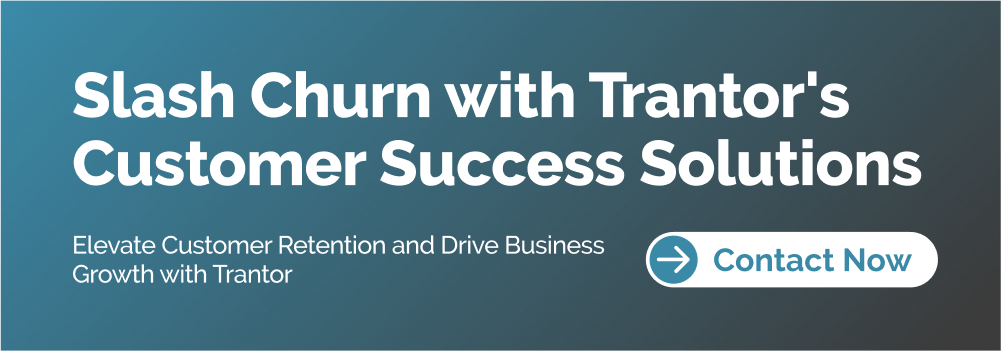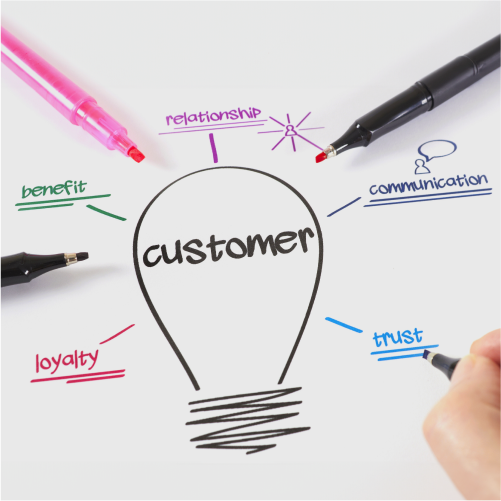CSaaS, zBlog
Churn Analysis: 7 Proven Techniques to Retain More Customers
atif | Updated: April 10, 2024

Introduction
In the dynamic world of business, customer retention stands as a paramount concern for organizations across various industries. As competition intensifies and customer expectations soar, managing customer churn has become a critical factor in achieving long-term success. Customer churn analysis, the process of identifying the underlying reasons for customer attrition, plays a pivotal role in developing effective strategies to retain valuable clients.
Understanding Customer Churn
Customer churn, also known as customer attrition, refers to the phenomenon where customers cease their relationship with a business, resulting in a loss of revenue and market share. Analyzing customer churn is crucial as it provides valuable insights into the factors that influence a customer’s decision to leave, enabling businesses to take proactive measures to address these issues.
The Importance of Customer Churn Analysis

Effective customer churn analysis offers numerous benefits to businesses, including:
- 1. Improved Customer Retention: By understanding the reasons behind customer churn, organizations can implement targeted strategies to address the root causes, leading to increased customer loyalty and reduced attrition rates.
- 2. Enhanced Customer Satisfaction: Churn analysis helps businesses identify and address pain points, enabling them to improve the overall customer experience and enhance satisfaction levels.
- 3. Increased Revenue and Profitability: Retaining existing customers is generally more cost-effective than acquiring new ones. Effective churn management can lead to higher revenue and improved profitability.
- 4. Competitive Advantage: Businesses that excel at customer churn analysis and retention are often better positioned to withstand competitive pressures and maintain a strong market presence.
The Impact of Churn
Companies with high churn rates struggle to grow. A survey found that a whopping 92% of SaaS companies that grew less than 20% annually failed to implement effective customer retention programs.
The Cost of Churn
It’s much cheaper to retain existing customers than to acquire new ones. Studies suggest that acquiring a new customer costs 5 to 25 times more than retaining an existing one.
Benchmarks for Churn Rate
There’s no one-size-fits-all churn rate, but some benchmarks exist. The median churn rate per month for SaaS businesses is around 0.75%, while a net revenue churn above 2% monthly might indicate areas for improvement.
Predicting Churn
Through churn analysis, companies can identify customers at risk of churning. This allows for proactive intervention and targeted retention efforts to win back those customers before they leave.
Beyond Rate
Churn analysis goes beyond just churn rate. It delves into reasons for churn, customer segments most prone to churn, and customer behavior that might indicate churn risk. This allows for tailored strategies to address specific churn triggers.
7 Proven Techniques for Effective Customer Churn Analysis

1. Data Collection and Segmentation:
- Data Collection: Gather comprehensive customer data, including demographic information, purchase history, engagement levels, support interactions, and customer feedback. This data provides the foundation for your churn analysis.
- Segmentation: Divide your customer base into meaningful segments based on relevant criteria, such as customer lifetime value, product usage, engagement patterns, and demographic characteristics. This allows you to identify high-risk customer groups and tailor your retention strategies accordingly.
2. Cohort Analysis:
- Cohort Grouping: Organize your customers into cohorts based on shared characteristics, such as acquisition date or specific product usage. This enables you to track the behavior and retention patterns of each cohort over time.
- Trend Identification: By analyzing cohort-level data, you can identify trends and outliers in customer churn. This helps you understand the long-term impact of various business decisions, marketing campaigns, or product changes on customer retention.
3. Predictive Modeling:
- Predictive Algorithms: Leverage machine learning algorithms and statistical techniques to develop predictive models that can identify customers with a high likelihood of churning. These models incorporate relevant variables, such as customer demographics, product usage, support interactions, and financial data.
- Proactive Intervention: By using predictive models, you can proactively engage with high-risk customers and implement targeted retention strategies before they churn, increasing your chances of retaining them.
4. Churn Root Cause Analysis:
- Qualitative Insights: Gather customer feedback through surveys, interviews, and analysis of support interactions to uncover the underlying reasons for customer churn.
- Root Cause Identification: Use techniques like the “Five Whys” or fishbone diagrams to delve deeper into the root causes of churn and identify the interconnected factors contributing to customer attrition.
- Targeted Strategies: The insights gained from churn root cause analysis enable you to develop and implement targeted strategies to address the specific issues driving customer churn.
5. Customer Lifetime Value (CLV) Analysis:
- CLV Calculation: Determine the projected lifetime value of each customer based on their historical spending, engagement, and retention patterns. This helps you prioritize retention efforts for high-value customers who contribute significantly to your business’s profitability.
- Personalized Strategies: Develop personalized retention strategies tailored to the needs and preferences of your high-value customers, ensuring that you maintain these valuable relationships.
6. Touchpoint Analysis:
- Customer Journey Mapping: Map out the entire customer journey, identifying critical touchpoints where customer interactions occur, such as onboarding, support interactions, and product usage.
- Touchpoint Optimization: Analyze customer behavior and sentiment at each touchpoint to pinpoint areas of friction or dissatisfaction. This enables you to enhance the quality and consistency of the customer experience across all touchpoints.
7. Competitive Benchmarking:
- Industry Comparison: Compare your churn rates and retention strategies with those of your industry peers or market leaders to understand how your performance measures up.
- Best Practice Identification: Identify the best practices and innovative approaches used by successful competitors to retain customers. This allows you to adapt and implement effective strategies from your competitors to improve your own customer retention efforts.
By leveraging these 7 proven techniques, you can gain a comprehensive understanding of your customer churn, identify the root causes, and develop targeted strategies to retain more customers, ultimately driving long-term business success.
More Stats and Facts about Churn Analysis

Embracing a data-driven approach to decision-making offers numerous benefits to organizations across industries:
- Early Intervention is Key: Studies show that churn can be reduced by as much as 50% by simply contacting at-risk customers within the first few days of identifying them.
- The Power of Frequency: Increasing customer touchpoints can significantly reduce churn. Frequencies can include helpful content, surveys, or personalized promotions.
- The Happiness Factor: Customers who report a negative experience are much more likely to churn. Prioritizing customer satisfaction surveys and addressing concerns promptly can significantly reduce churn.
- The Inertia Factor: Customers who are less engaged are more likely to churn. Tracking product usage and identifying inactive users allows for intervention and re-engagement efforts.
- The Value of Reviews: Negative reviews can significantly impact churn rates. Encouraging positive reviews and addressing negative ones promptly can improve customer sentiment and reduce churn.
- Social Media Matters: Social media sentiment can be a leading indicator of churn. Monitoring brand mentions and addressing negative feedback can help nip churn in the bud.
- The Referral Advantage: Customers who refer others are less likely to churn themselves. Loyalty programs and referral incentives can encourage customer advocacy and reduce churn.
- The Employee Impact: Employee churn can also lead to customer churn. Investing in employee satisfaction and reducing employee turnover can have a positive impact on customer retention.
- The Industry Effect: Churn rates vary significantly by industry. Understanding industry benchmarks can help businesses assess their own churn performance.
- The Tech Touch: Technology can be a powerful tool for churn reduction. Customer Relationship Management (CRM) systems and churn prediction software can streamline churn analysis and identify at-risk customers.
Conclusion: Trantor’s Customer Success Services
At Trantor, we recognize the paramount importance of customer churn analysis in driving long-term business success. Our comprehensive Customer Success Services are designed to empower organizations like yours to unlock the full potential of their customer base and foster enduring relationships.
Our team of experienced professionals combines data-driven insights, industry best practices, and cutting-edge technologies to deliver tailored solutions that address the unique challenges you face in managing customer churn. From in-depth data analysis and predictive modeling to the implementation of targeted retention strategies, we partner with you every step of the way to help you retain more customers and drive sustainable growth. Embark on your customer churn analysis journey with Trantor and unlock the secrets to increased customer loyalty, enhanced profitability, and lasting competitive advantage. Contact us today to learn more about how our Customer Success Services can transform your business.




